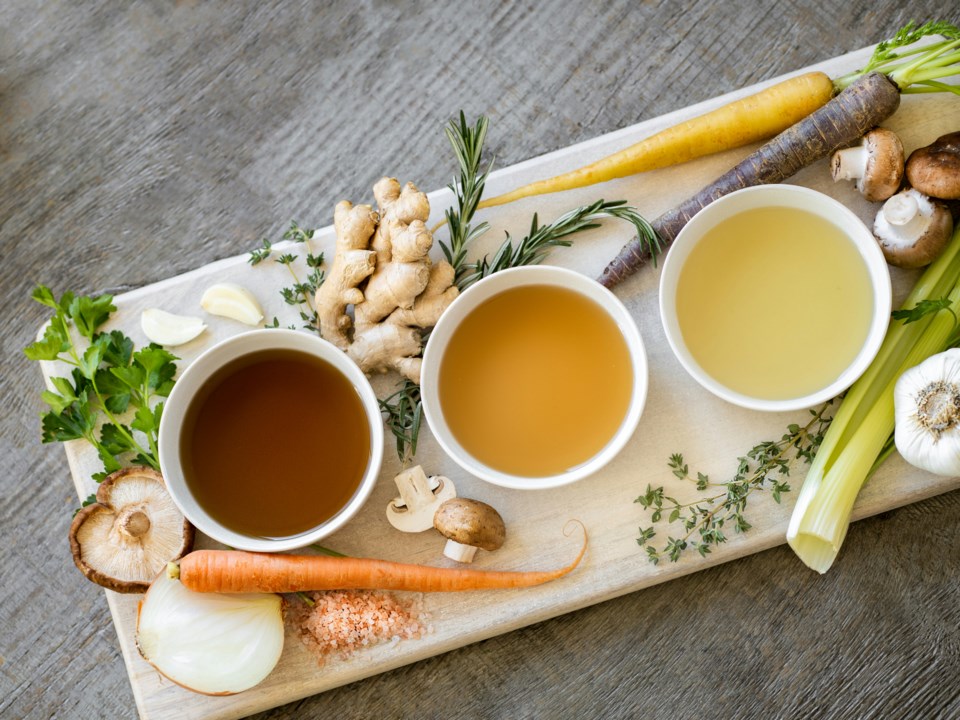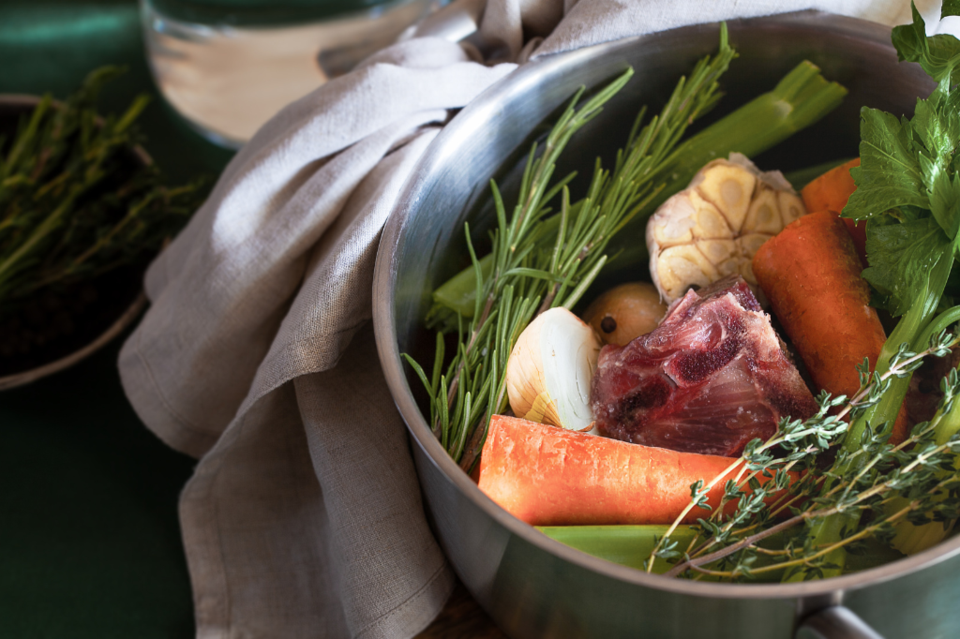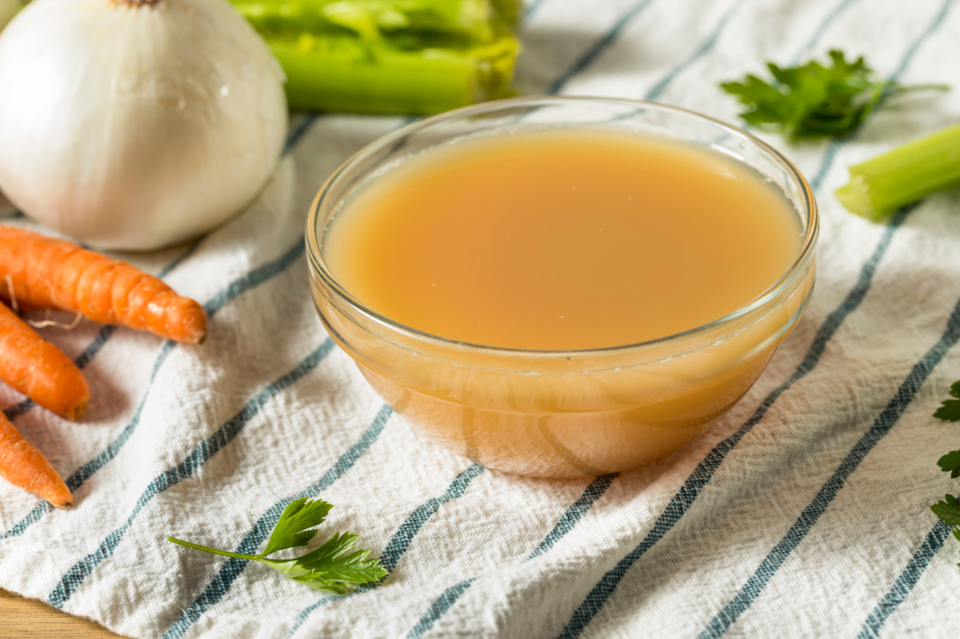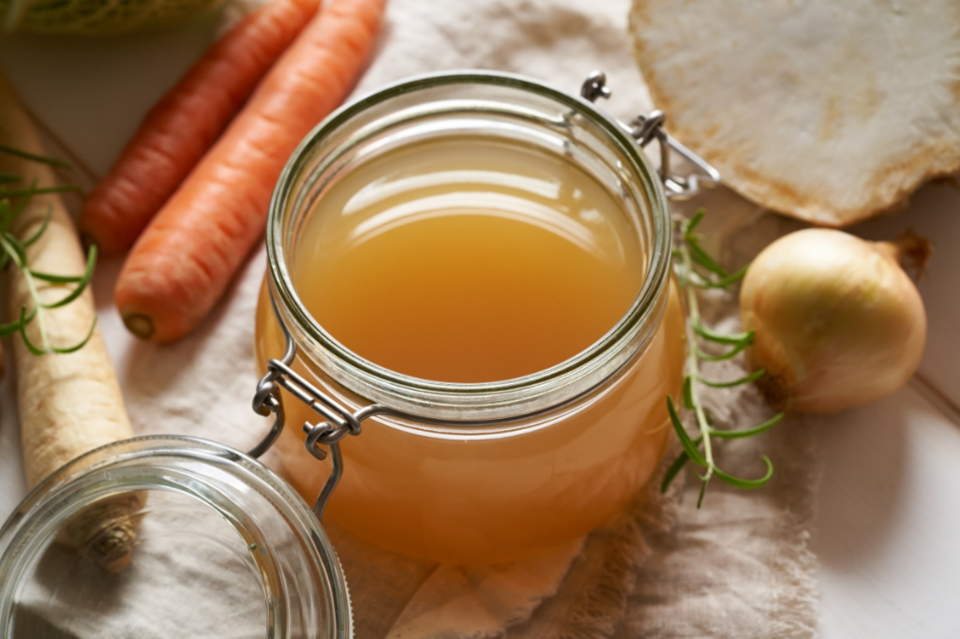January in Ontario typically means freezing temperatures, hibernating indoors, and a seemingly endless cycle of respiratory viruses—and this winter appears to be taking the cake with pneumonia galore and the dreaded 100-day cough.
If you’re looking for a comforting, nutrient-packed remedy to soothe you back to health or keep viruses away, it’s time to make bone broth your new winter staple.
This savoury, slow-simmered “liquid gold” has been trending for over a decade; it’s a centuries-old elixir brimming with health benefits. Best of all, it’s easy and affordable to make at home. Here’s why you should add homemade bone broth to your regular rotation and how to whip up a pot of liquid gold in your own kitchen.

Why Bone Broth Deserves a Spot in Your Diet
Bone broth is made by simmering animal bones, connective tissue, vegetables, and seasonings for hours, infusing water with nutrients and sip-worthy flavours. The result is a rich, savoury, nutrient-dense broth loaded with:
- Collagen and gelatin: These valuable proteins support joint health, improve skin elasticity, and strengthen the gut lining, essential for a robust immune system.
- Minerals: Calcium, magnesium, phosphorus, zinc, and selenium promote bone health, metabolic processes and boost immune cell function.
- Amino acids: Glycine, proline, and glutamine aid detoxification, tissue repair, gut health, and inflammation reduction, which are all key for immunity.
- Electrolytes: Sodium, potassium, and chloride maintain hydration, muscle performance, and nerve health.
Studies have shown that bone broth may help reduce joint pain, improve digestion, and boost immunity—a welcome perk during cold and flu season. Sipping a steaming cup of broth can be incredibly soothing on a chilly day.

How to Easily Make Bone Broth at Home
Making bone broth at home is surprisingly straightforward. You don’t need fancy gadgets or expensive ingredients—just a large pot, some bones, and a little hands-off time. Here’s how:
Ingredients:
- 2-3 pounds of bones (chicken, beef, turkey, or a mix)
- 1-2 carrots, roughly chopped
- 1-2 celery stalks, roughly chopped
- 1 onion, quartered (no need to peel!)
- 2-3 garlic cloves, smashed
- 1-2 tablespoons apple cider vinegar (helps to draw nutrients from the bones)
- Water (enough to cover the ingredients by about 2 inches)
- Seasoning: bay leaves, parsley, peppercorns, or other herbs and spices for flavour
Directions:
- Prepare the bones: To enhance the flavour of raw bones, roast them in a 400°F oven for 30-45 minutes. If using cooked bones (such as those from a roasted chicken or turkey), skip this step.
- Combine ingredients: Place bones, vegetables, apple cider vinegar, and seasonings in a large pot or slow cooker. If you prefer to keep your seasonings contained, tie them up in cheesecloth, known as a sachet d’épices or spice sachet. Add enough water to cover everything.
- Simmer low and slow: Bring the water to a boil, then reduce the heat to a gentle simmer. Cover and cook for 12-24 hours. A slow cooker can work wonders here and provide peace of mind when you extend the simmer to 24 hours.
- Strain and store: Once the broth is rich and golden, strain out the solids using a fine-mesh strainer. Let it cool before transferring it to jars or containers for storage.
Bone broth can be refrigerated for up to 5 days or frozen for several months. Pro tip: Freeze broth in ice cube trays for convenient single servings.

The Many Ways to Enjoy Bone Broth
Bone broth is as versatile as it is nutritious. You can sip it straight out of a mug as a warm drink or use it as a base for soups, stews, and sauces. If you’re making it to sip, there are endless ways to customize it according to your tastes. To jazz up the flavour, add a splash of lemon juice, a sprinkle of sea salt, a pinch of cayenne pepper, or whisk in turmeric and a slice of ginger.
Pro Tips:
- Save scraps: Keep a bag of vegetable peels, herb stems, and bones in the freezer to make your broth more sustainable and cost-effective.
- Use quality ingredients: Whenever possible, use organic or grass-fed bones to ensure your broth is free of harmful additives.
- Don’t skimp on Time: The longer the simmer, the more nutrients and flavour you’ll extract from the bones.
Bottom line
Homemade bone broth is the ultimate multi-tasker: nutritious, comforting, and endlessly adaptable. Whether you’re fighting a pesky head cold, looking to improve your gut health, or simply seeking a cozy winter ritual, this simple recipe offers big rewards for minimal effort.
About the Author

Alicia is a journalist and editor in digital and print media specializing in health, nutrition, fitness, and wellness. She was previously the Editorial Director of Clean Eating and Vegetarian Times. Her work has also appeared in Hone Health The Edge, Yoga Journal, Women’s Running, and Oxygen, among others. In addition to being a content creator, she's an ISSA-certified nutritionist, certified personal trainer, and fitness studio owner in Toronto. Alicia loves spreading the word about helpful, science-backed health information, and she can be contacted via her website at aliciamtyler.com.




